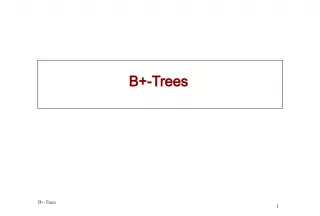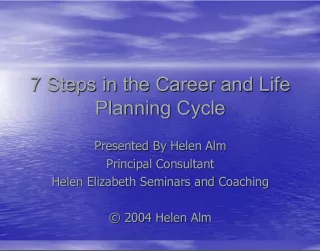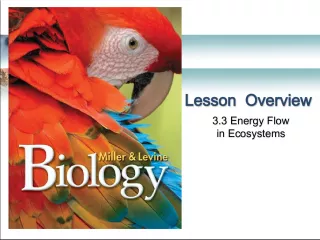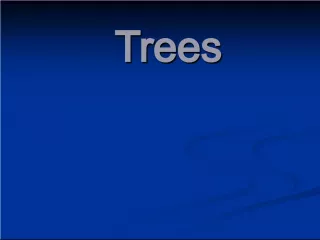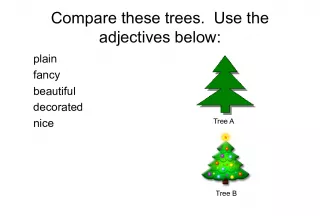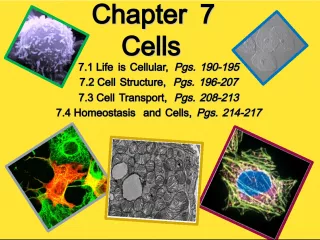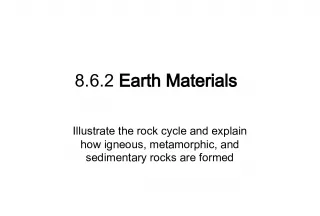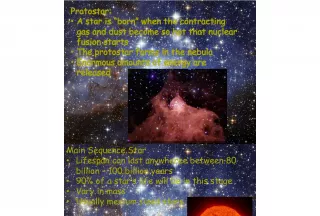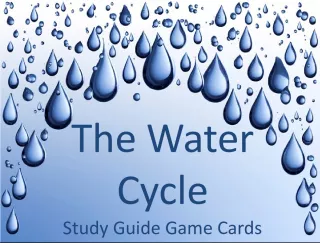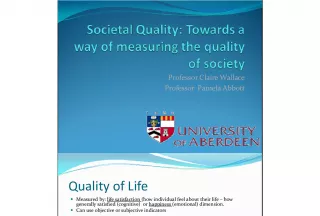Understanding the Life Cycle of Trees
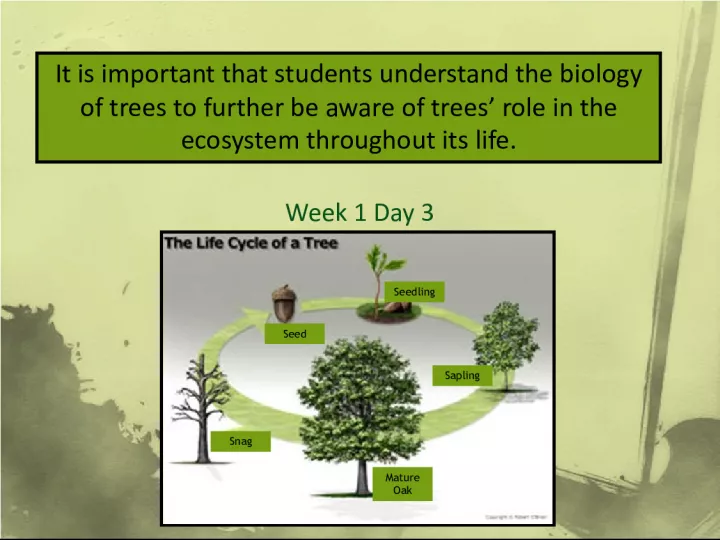

In this article, we will discuss the importance of understanding the biology of trees to further comprehend their role in the ecosystem throughout their life cycle. We will go through the different stages of a tree's
- Uploaded on | 5 Views
-
 severina
severina
About Understanding the Life Cycle of Trees
PowerPoint presentation about 'Understanding the Life Cycle of Trees'. This presentation describes the topic on In this article, we will discuss the importance of understanding the biology of trees to further comprehend their role in the ecosystem throughout their life cycle. We will go through the different stages of a tree's. The key topics included in this slideshow are . Download this presentation absolutely free.
Presentation Transcript
Slide1How to Measure & IDWeek 1 Day 3 It is important that students understand the biology of trees to further be aware of trees’ role in the ecosystem throughout its life. Seedling Seed Sapling Mature Oak Snag
Slide2Like all living things trees have a life cycle : Birth Growth Aging Death As trees grow, their physical form changes as does their role in the forest ecosystem
Slide3Seeds come in a variety of shapes , weights, colors, and sizes, depending on the species. Seeds develop from male and female parts of the trees producing fruits . Some seeds are in a protective nut like an acorn Others are in fleshy fruits, like the black cherry. The fruit of a pine is a cone and the seed is winged and resembles a miniature helicopter when falling. Wind, water, animals, and people disperse seeds to the forest floor, open fields, yards and roadsides. Where conditions are favorable for germination, seeds will germinate and grow. Which came first - the tree, or the seed?
Slide4The seedling grows and begins to develop woody characteristics. The stems harden, change color, and develop a thin protective bark. The stem may bend or develop branches that reach toward light . Leaves or needles that develop are adapted to shade, but lean or tilt toward light . Most roots are in the upper soil to absorb water, nutrients and air. Seedlings compete for nutrients, water, sunlight, and space. Threats include fire, flood, drought, disease, insect attacks, and animals. At this stage the tree is most susceptible to being killed.
Slide5When the tree is about 1-4 inches in diameter at 4.5 feet, it is considered a sapling. standard height where tree’s diameter is measured – diameter at breast height (DBH). As the tree starts to get taller the trunk thickens and branches develop. A sapling is the size of a tree growing in a nursery. In this juvenile state, the tree is not mature enough to reproduce . Growing rapidly, the sapling has the same competition and threats as seedlings.
Slide6With favorable conditions, a sapling will grow into a mature tree (>4 inches DBH). During this stage, each tree will grow as much as its species and site conditions will permit. In addition, flowers develop, reproduction ensues, fruits form, and seed dispersal can now occur. Trees provide the maximum environmental benefits to people during this stage . What does DBH mean?
Slide7What plant in the picturewould you say is a mature tree?
Slide8The life span of a tree is a wide-range, yet death is inevitable. A combination of factors overcome a tree and causes it to die . Injury, drought stress, followed by disease, rot, root dieback, coupled with a lightning strike or insect infestation contribute to tree decline. Sometimes a single factor is serious enough to cause mortality.
Slide9Standing dead trees, called snags, play vital roles in the life cycle of many organisms. A snag slowly breaks down and returns nutrients as limbs, bark, and branches fall. It provides habitat and food for wildlife and insects. Animals, insects, and fungi help break down the tree. Eventually, the snag will fall and return nutrients to the soil where they are taken up by other trees. And, the cycle begins anew.
Slide10What stage of thelifecycle are these trees in currently? SEEDLING
Slide11What stage of thelifecycle are these trees in currently? SNAG
Slide12What stage of thelifecycle are these trees in currently? SAPLING
Slide13Have you ever measuredanything? WHAT? HOW? WHY? Why do people measure things? In what ways do people measure things?
Slide141. Use the length of your index finger to measure the width of you textbook. 2. Use the length of your forearm to measure the height of your desk. Record the results in your packet. How many finger lengths is your book? Why did people get different measurements? Compare your index finger with your neighbors. How can we make sure our measurements are accurate?
Slide15Plan harvesting Make forest management decisions Monitor forest health
Slide16Tree diameter is an important forestry measure and is used to indicate how well a tree is growing over time. It is also one of the standard measures of timber volume used to estimate the commercial value of a forest stand. By convention, the diameter is measured at a height on the trunk that is 1.35 m (4.5 ft) above ground level. This height above the ground is used because uneven swelling and irregular growth at the base of the tree and upper roots could mask the true growth of the trunk. What would happen if people measured tree circumference at different heights?
Slide17This is a horizontal measurement: leaf tip to leaf tip of the shortest spread leaf tip to leaf tip of the longest spread through the main mass of the tree canopy Add the two numbers together, and divide by two for the average crown spread Crown spread is difficult to measure when branches are high. Have 2 people stand where the tips of the farthest branches are directly overhead. A 3 rd person can measure the distance at ground level. 3 .5 feet 1 .5 feet What is the crown spread of this tree? 2.5 feet
Slide18What is the crownspread of this tree? 11 feet 8 feet 9.5 feet
Slide19What characteristics would you use to identify trees? Look at the twigs on your desk for ideas. Look at several different features Leaves Bark Twigs Flowers Fruit Seeds Shape How do you think you use a book like this to identify trees?
Slide20In the simplest sense we have 2 types of trees : Conifers (coniferous) : seeds develop in cones, have needle shaped leaves don’t lose leaves each year so stay green = evergreens Pines, spruces, hemlocks and firs Broad-leaf ( deciduous ) : broad, flat leaves that they lose each year Oaks, maples, beeches and aspens
Slide21Differ in many ways and help identify trees Tips may be pointed, rounded, tapered… Bases may be squared, rounded , heart- shaped…
Slide22What are theshapes of these 3 leaves? PALMATE! HEART-SHAPED! ROUND OR OVAL! 1 2 3
Slide23Edges or margins of leaves give clues to tree identity Teeth (serrated) Lobed Smooth ( toothless )
Slide24What type of leafmargin do these leaves have? LOBED!
Slide25Completely hairy Hairs on one side Completely smooth Thick, thin, rough or waxy
Slide26Simple leaves have only one piece to them Maple, oak, aspen and sycamore Compound leaves are made-up of several leaflets Ash , walnut and sumac trees
Slide27Are these leavessimple or compound? 1 2 3 4 5 6
Slide28The way the leaves are arranged on the twigs Alternate, opposite , whorls
Slide29What kind of leafarrangements are these? ALTERNATE!
Slide30Even leafless twigs can help identify trees. Look for the leaf scars (leaves used to be there) or buds on the twig to see if leaves grow alternate , opposite or whorled. Size, color , texture, and shape of buds also help identify trees. Spines, thorns, prickles and other surface features also help.
Slide31What type of leafscar pattern do these twigs show? 1 2 ALTERNATE! OPPOSITE!
Slide32Various tree species produce characteristic fruits . Deciduous tress produce berries, winged samaras, nuts, or drupes. Some have unique names (acorns, walnuts, and chestnuts). Conifers produce different cones that vary in shape, size, and arrangement of scales.
Slide33Identify with the color and texture Shaggy, smooth , rough or deep furrows Example: Paper Birch – white, paper-like Use bark on trunk , not branches Paper Birch
Slide34Characteristic shapes can identify trees Rounded, weeping , vase-to Funnel, tabular and conical Some people are able to look at a tree in the distance and know what kind it is


